I have a input file which I am struggling to read in line by line, The file can be found here and is also shown below:
I would like to add the first value as key and the third value as item in a dictonary
Then later I can do this: a = myDictonary("CREATED_BY") and this will then return "Eigil..." (Order and number of lines my vary from time to time..)
But somehow I can not get the split to work:
Dim hf As Integer: hf = FreeFile
Dim lines() As String, i As Long
Open FileName For Input As #hf
Line Input #hf, dataLine
lines = Split(dataLine, vbNewLine)
lines = Split(dataLine, "\n")
lines = Split(dataLine, "CR")
lines = Split(dataLine, "LF")
Close #hf
I also tried to follow this thread
For people who like to use dictinary here is my code for that:
Set getProjectDictionary = CreateObject("Scripting.Dictionary")
Dim item As String
Dim key As String
Dim dataLine As String
Open FileName For Input As 1
While Not EOF(1)
On Error Resume Next
Line Input #1, dataLine
temp = Split(dataLine, ",")
If Not temp(0) = "" Then
getProjectDictionary.Add temp(0), temp(3)
End If
Wend
Close 1
